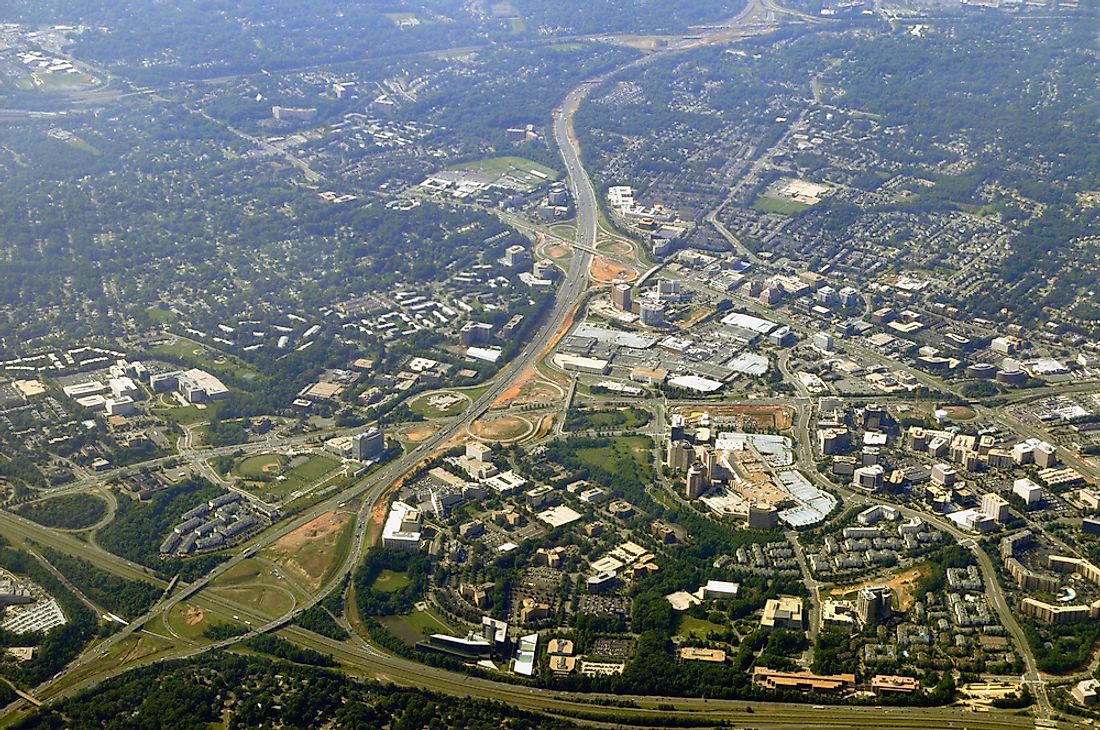What is an Edge City?

Business environments can exist either within the central business district or outside the city. An area becomes an edge city when there is a concentration of firms, entertainment and shopping centers in a previously known rural or residential area. An edge city is an American term that thrived towards the end of the 20th Century. Its use was as a result of the popularity of Joel Garreau's book entitled "Edge City: Life on the New Frontier" written in 1991. By then, Garreau was a reporter who was working for the Washington Post. He was responsible for establishing the current meaning of "edge city." According to Garreau, "edge cities" were a strategy to expand cities.
In the recent past, there has been evident urban growth globally. Expansion has occurred due to the development of edge cities in most urban cities' suburbs resulting in an apparent difference between the growth of cities today and in the 19th Century. Back then, there was a central downtown in most urban centers without other prime business environments. Edge cities are sometimes called mega centers, suburban activity centers, and suburban business districts.
Characteristics of an Edge City
Some rules to follow for what can be considered an edge city were outlined by Garreau in 1991. The first rule was that the area should occupy a vast space of at least five million square feet or 465,000 square meters. Furthermore, the area of land should be in a leasable office space. Secondly, the leasable retail space should be at least 56,000 square meters or 600,000 square feet. Thirdly, the jobs should be more than the bedrooms, a strategy that ensures that they give work and business priority. Fourthly, its population must perceive that an edge city is a single place that is united. Lastly, there should be no indication that the place had been a town in the last 30 years.
There are three distinct groups of edge cities. The most common type of edge cities are the "boomers." A boomer is an edge city that developed gradually around a highway or shopping mall. Northern Virginia and Tysons Corner are both boomers. The second type of edge cities are the "greenfields." They are those edge cities that rise as a result of an upcoming suburban town. Their development always and majorly lies on their suburban fringe. Reston Town is a classic example of a Greenfield. Uptowns are the edge cities that grow from old cities based on their history. Another name used to refer to uptowns is satellite cities. Rosslyn–Ballston Corridor is an example of an uptown.
How Do Edge Cities Develop?
Most of the edge cities sprout in freeway intersections which need planning or are near existing cities. They develop better when this intersection exists near a major public airport. Heavy industry and manufacturing activities are a rarity in edge cities at the time of their development. Numerous edge cities have come up in the United States. They are more than the downtowns that match their sizes. There are 200 edge cities in the United compared to the 45 existing downtowns. The edge cities have even more vast space due to their automobile scaling.
The Effect of Edge Cities
Edge cities are a result of decentralization of people and resources which began in the 1960s. There has been an evident shift in socioeconomic activities leading to reduced competition for jobs and services. The scenario here has caused a lot of debate by economists on whether "people follow jobs or jobs follow people". Edge cities have led to withdrawal of workers from the metropolitan areas to them leading to a boost of their economies. Therefore, edge cities have contributed much towards urban development and business expansion.







